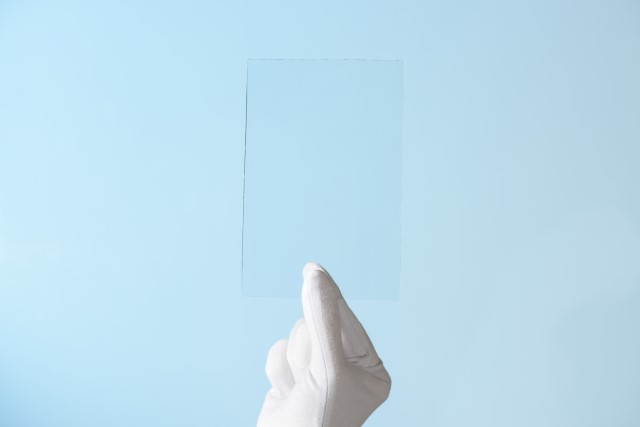
Say Goodbye to Glare: The Essential Garmin Nav 6 Anti-Reflective Film
With the Garmin Nav 6 Anti-Reflective Film, you can say goodbye to shading a screen in harsh sunlight
NOTICE: Any orders placed from 28th July to 3rd August will not be dispatched until 4th August

How Is Electrically Conductive Glass Achieved?
If you have just googled how is electrically conductive glass achieved, you are probably already where that conductive glass is a ‘thing’. It has been in fact, a game changer. This revolutionary technology, widely utilised across diverse industries, owes its capabilities to a specialised coating known as Indium Tin Oxide (ITO).
At Diamond Coatings, we’re dedicated to unravelling the potential of conductive glass, with a focus on the pivotal role played by ITO coatings.
Wait… What exactly is ITO?
At the heart of electrically conductive glass lies a transparent conductive coating called Indium Tin Oxide, or ITO. This clever compound boasts a unique combination of optical transparency and electrical conductivity. ITO coated glass has emerged as the material of choice for various industries aiming to seamlessly integrate these crucial properties.
Achieving electrically conductive glass is a precise and meticulous process that revolves around the deposition of ITO onto the glass surface. This process comprises several key steps:
Cleaning and Preparation: The glass substrate undergoes a rigorous cleaning regimen to ensure a flawlessly pristine surface. This initial step is crucial in attaining a uniform and reliable ITO coating.
ITO Deposition: The immaculately cleaned glass is placed within a controlled environment, typically within a vacuum chamber. Here, a thin layer of ITO is deposited onto the glass surface. This deposition process grants precise control over the thickness and uniformity of the coating.
Annealing: Following deposition, the ITO coated glass undergoes an annealing process. This entails subjecting the glass to specific temperatures, enhancing the conductivity and durability.
Stringent Quality Control: Rigorous testing and quality control measures are implemented to verify that the ITO coating meets the exacting specifications required for transparency and conductivity.
Applications of Electrically Conductive Glass
Touchscreens and Displays: ITO coated glass forms the backbone of touch-sensitive screens, from the screens of smartphones and tablets to large-scale interactive displays. Its remarkable conductivity and transparency enable precise touch recognition without compromising visual clarity.
EMI Shielding: In electronics and aerospace applications, where electromagnetic interference (EMI) can potentially disrupt sensitive equipment, ITO coated glass acts as a protective barrier. It effectively shields against unwanted electromagnetic waves while maintaining transparency.
Solar Cells and Photovoltaics: The energy sector benefits significantly from ITO coated glass. It serves as a transparent electrode in solar cells, enabling efficient energy conversion while allowing sunlight to pass through.
Smart Windows and Mirrors: ITO coated glass finds applications in dynamic windows and mirrors. These can adjust their tint in response to changing lighting conditions, optimising energy efficiency and comfort.
Medical Devices: Precision and clarity are paramount in medical equipment. ITO coated glass is integral to devices like diagnostic equipment, touch-sensitive controls, and imaging systems, ensuring accuracy and reliability.
Automotive Displays and Sensors: Within modern vehicles, ITO coated glass is utilised in displays, touchscreens, and sensors. It provides a durable and reliable solution for enhancing the driver’s experience and safety.
It is clear that the use of ITO to provide electrically conductive glass has led to huge technological innovations and propelled numerous industries forward. At Diamond Coatings, we’re dedicated to advancing this technology, providing tailored solutions for a number of industries across the globe.
We operate from a state of the art facility in the Midlands and are ISO9001 accredited, ensuring the highest quality is achieved from within our company. For more information on our ITO coated glass please get in touch with us today.

With the Garmin Nav 6 Anti-Reflective Film, you can say goodbye to shading a screen in harsh sunlight

At Diamond Coatings, we provide the foundational transparent conductive coatings that make these advanced switches possible

At Diamond Coatings, we specialise in turning ordinary glass into high-performance heated windows

As a leading name among ITO companies, Diamond Coatings doesn’t just supply standard coatings; we engineer bespoke solutions that push boundaries
If you are interested in any of our products or services, please use the contact form or give us a call, we will be happy to discuss how we may be able to help you.